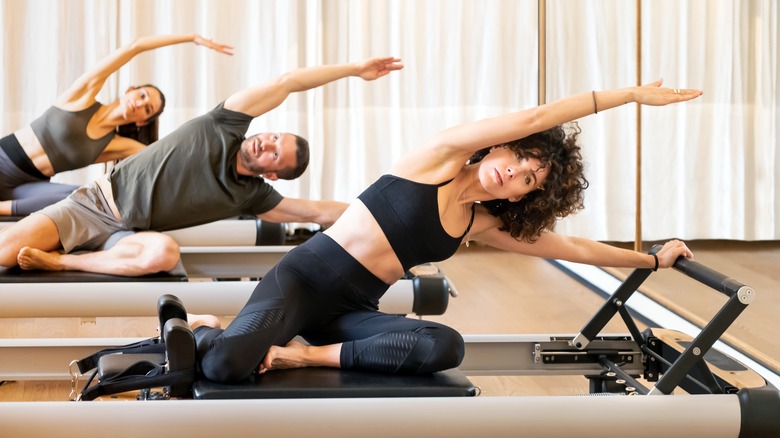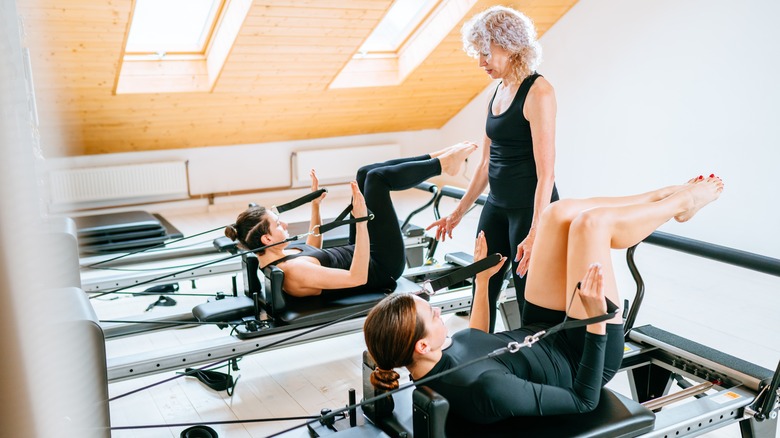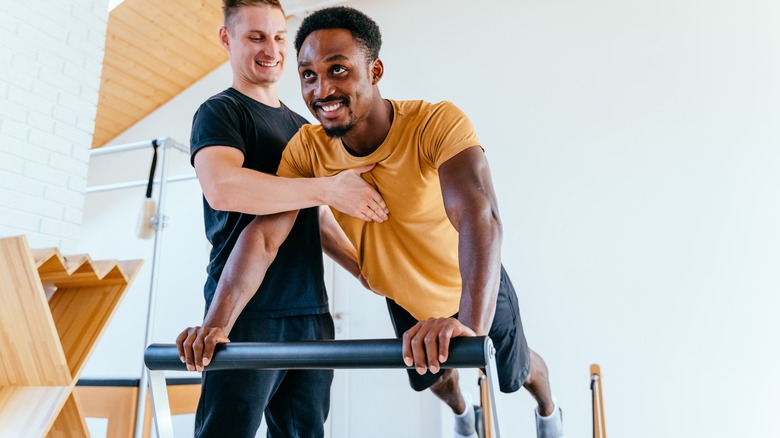What's The Difference Between A Pilates Reformer And A Pilates Tower?
Even if you haven't tried the workout yet, you've definitely heard of pilates. According to Pilates.com, this increasingly popular training style is named after Joseph Pilates, the German gymnast who invented it under the most unexpected circumstances. It was the outbreak of World War I and Pilates, who was in England at the time, was sent to prison because he was German and therefore an enemy of the state. This became a life-changing moment for Pilates as he gradually developed the full-body indoor training regime that would later become a global sensation.
Just consider what happens to your body when you do pilates every day. As Pilates proudly told Sports Illustrated back in 1962, during an interview about Contrology, the original name for his training regime, "By exercising your stomach muscles you wring out the body, you don't catch colds, you don't get cancer, you don't get hernias." There are multiple ways to practice, including mat classes, reformer, and tower pilates. If you're wondering what the difference between those last two is, don't panic. These are the benefits of each style so that you can choose which works best for you.
Regularly practicing pilates has major health benefits either way
While it might feel like pilates is the latest health craze it actually has impressive, and scientifically proven, health benefits. A 2018 study published by the Journal of Exercise Rehabilitation supports Joseph Pilates' original claims, demonstrating that people in their thirties and forties who regularly practiced pilates had overall better functional movement and better overall health than those who practiced yoga or didn't exercise at all.
According to Patricia Sabulis, a Mirror trainer and Lululemon ambassador, starting with mat classes is your best option if you're new to pilates, as she told SELF. Likewise, this is what you should know before doing pilates for the first time. Pilates mat classes are similar to yoga classes in the sense that both involve floor work and mostly rely on your body to perform all training, rather than any weights or other equipment.
Once you feel like you have a strong foundation and understanding of the basic exercises, you can try reformer or tower pilates. Either way, keep in mind that, "The soreness of pilates is different from the burn you get from pulsing in a barre class or throwing around a kettlebell," as instructor Gabriela Estrade advised. She elaborated, "It's a more subtle soreness, where you sometimes find muscles that you didn't know you had."
There are subtle differences between reformer and tower pilates
Once you're confident enough in your abilities to move on, it's worth noting that there are subtle but important differences between reformer and tower pilates. A reformer is a horizontal machine with a moving carriage that has strings and bars attached, for you to push with your arms and legs. The apparatus can be used for most pilates exercises, no matter the level of expertise of the user, per Pilates Connector.
"With the combination of adjustable spring resistance and a sliding platform, the reformer can create resistance or instability (or both) to make exercises easier or harder in a way that the mat can't," Justin Rogers, Head of Brand at Ten Health & Fitness, explained to Women's Health. On the other hand, the pilates tower tends to be bigger and includes a vertical attachment to it, as the name suggests, with multiple components to perform a wider range of exercises.
According to pilates instructor Libby Teale, "The tower will allow you to move your body in new ways so it is a great way to shake up your pilates practice" (via Yoganic). Many of the exercises that are performed on a pilates reformer are the same for the pilates tower, but the way your body stretches is different thanks to the equipment used. Thus, the choice is all about personal preference and how much you want to challenge yourself.


